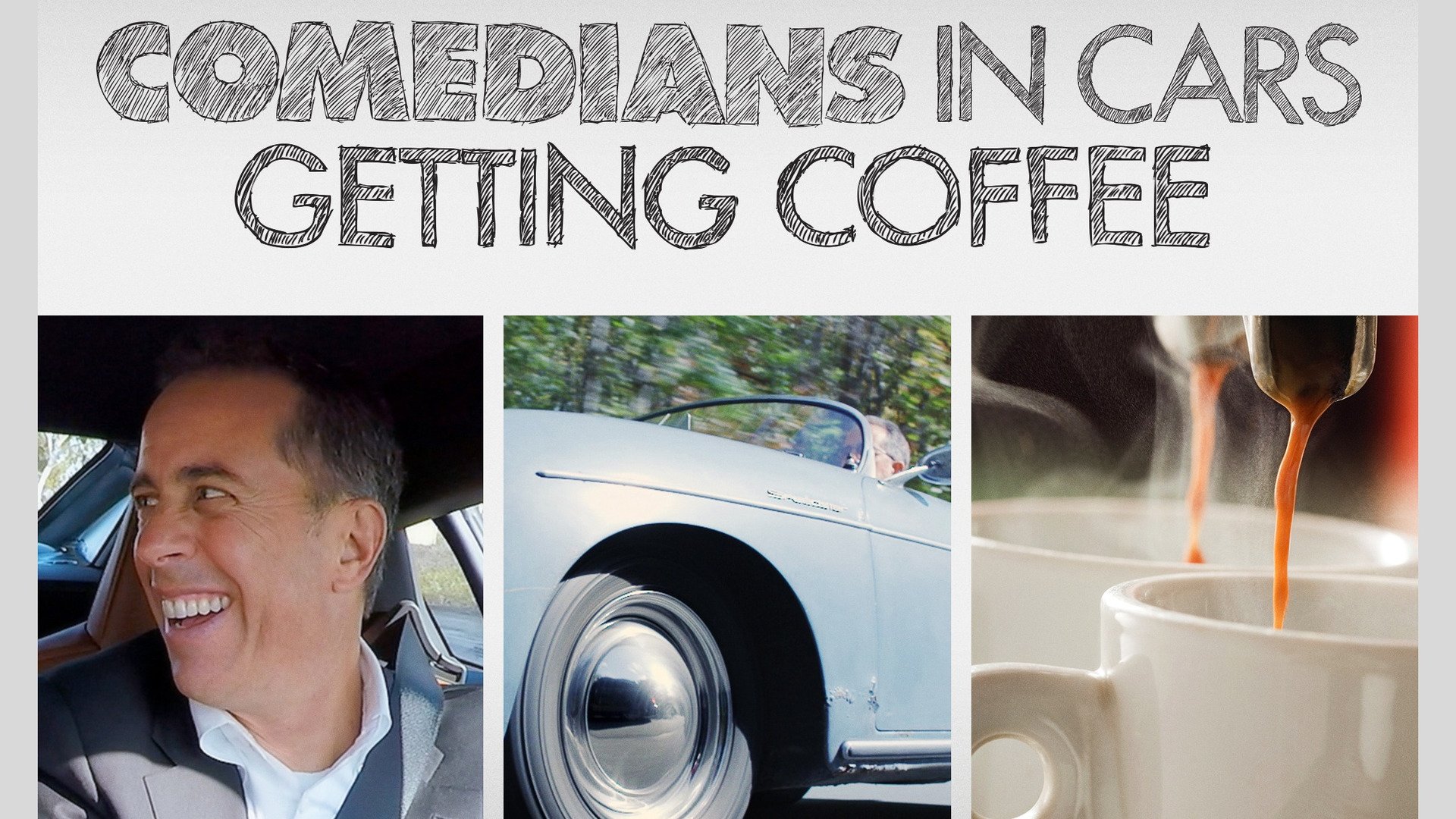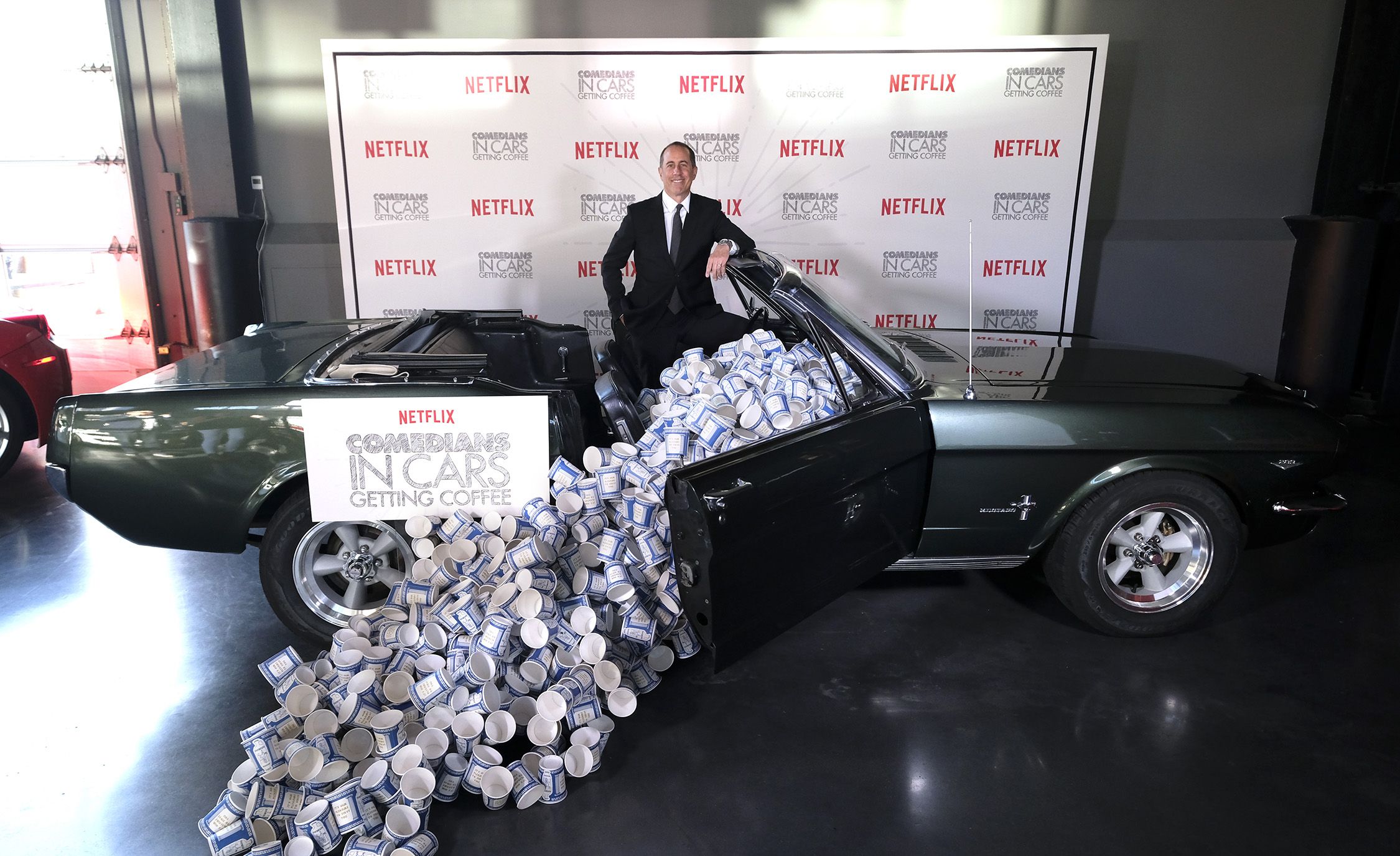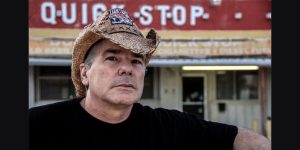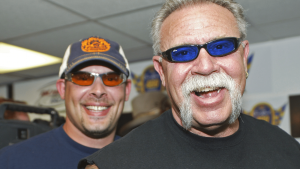“Comedians in Cars Getting Coffee” is an American talk-show web series, created, produced and hosted by the famous award-winning actor-comedian Jerry Seinfeld, in which he drives around and shoots the breeze with his celebrity guests. The series premiered in July 2012 and ran for 11 seasons, achieving success, receiving various nominations, and winning awards. It was initially aired on the network Crackle, then after 2018 the series moved to Netflix. Despite the enormous popularity, in 2020, Jerry announced that the show would probably come to an end, much to fans’ shock, wondering what happened to the show, and why it was canceled.
How was the show created?
Jerry, who gained worldwide popularity for portraying a semi-fictionalized version of himself in the iconic sitcom “Seinfeld,” disclosed that the “Comedians in Cars Getting Coffee” idea was born in 2002. The concept reportedly stemmed from a DVD extra for his documentary film “Comedian”, and a subsequent trip to New Mexico where he bought an old VW Beetle and filmed his return to the east coast. Talking of the show’s inception, he said that it was ‘an experiment’ and that he ‘did not know it could lead to anything.’
He began developing the concept; Jerry spoke to some of the leading social network advisers, who told him that any show that lasted longer than five minutes had low chances of becoming a success on the internet. He said: ‘All comedy is distillation. So I thought, ‘What if you took a two-hour conversation and shrunk it down to 14 minutes? What would you get? And I thought, ‘Well, with certain people, I think you’d get something.’
Jerry’s premise was to have different guests for each episode, and they would drive around, make a stop at a coffee shop, drink the coffee in the car while driving and discuss various subjects and happenings. Thinking that it was an excellent opportunity for a coffee magnate to sponsor and promote their products, Jerry reached out to Howard Shultz, the former CEO of Starbucks.
Reportedly, Jerry sent him 10 episodes that would make up the first season. Still, Howard rejected the offer, saying: ‘I don’t’ really see a connection’ to which Jerry replied: ‘Are there other people coming in your office pitching other shows with ‘coffee’ in the title?’
Don’t miss this clip from @JerrySeinfeld’s Comedians in Cars Getting Coffee featuring the #AcuraNSX prototype: http://t.co/x0OOwD2nLf
— Acura (@Acura) January 16, 2014
Luckily for Jerry, the coffee company Acura saw the potential and appeal, and got on board with the idea, providing creative license to Jerry with making commercials and product placements. In an interview, Jerry said: ‘”If it wasn’t for Acura, the whole show never would have happened.’
The Show’s Format
Eventually, the show was given the green light, and in partnership with Sony Pictures Entertainment, premiered on Sony’s network, Crackle. In no time it became a success, and in 2015 it was streamed over 100 million times.
The format revolves around the car driving, and having a ‘moment’ with his guest. Jerry believed that ‘when attempting to show the meandering, silly and sometimes deep conversation that comedians share, you have to remove the audience to keep the participants from dropping into their acts. Jerry also added that ‘part of what makes the show watchable is that it’s always moving. There is no narrative to drive the story. We know what happens. We know that they’re trying to get coffee. You need kinetic energy to move it along. Moving people around makes them awake.’
Comedians in cars getting coffee is an example of a podcast format that’s butchered by the language of television. Too many cuts and edits.
— The Blindboy Podcast (@bbboatclub) July 12, 2018
A vital element of the show’s format that Seinfeld, as a passionate automotive enthusiast, wanted to implement was showcasing various rare, highly coveted, and eye-catching cars. An interesting detail – he ‘hosted’ the first and the last episode of the show driving a 1966 Porsche 356. Even though it’s widely known that Jerry has a massive and expensive car collection, he doesn’t own all the cars that have been shown in the series; instead, it appears that most of those were rented or borrowed.
The estimated episode’s cost was around $100,000, and the initial shooting time was three and a half hours, which was then edited to a 12 to 20-minute episode. The production staff was very lean, involving a minimum of network interaction. The show was envisioned as an unscripted talk show without an audience, that you could watch on your smartphone.
https://www.instagram.com/p/BBgNWBJzNWg/
Celebrity Guests
During the 11-season- run of the show, Jerry had various high-profile comedians and celebrities join him for a ride, coffee and friendly chit-chat; some of those were Eddie Murphy, Jamie Fox, and Seth Rogan. Instead of following a strict shooting regime, Jerry often worked with guests appearing together, such as Carl Reiner and Mel Brooks, and Colin Quinn and Mario Joyner.
He also talked to the famous YouTuber/ comedian Colleen Ballinger, who appeared in character as Miranda Sings. Bob Einstein was his first guest to star twice on the show – in the first and ninth seasons; others such as Ricky Gervais had their appearance split into two episodes.
https://www.instagram.com/p/BQlVmhDjDVu
Furthermore, his guests were paid in a unique way – he paid his guests $4,000 in twenties in a white envelope after the filming. Jerry said: ‘That was our comedy club money — nothing felt better than when they would hand you that envelope at the end of the week.’
Was the format for the show stolen?
Since the show premiered, it met some criticism for seemingly adopting the format created by English actor and comedian Robert Llewellyn, and the idea from his 2009 web show entitled “Carpool.” Similar to Jerry’s series, Robert also drives around, giving a lift to his guests, usually famous British personalities, and interviewing them in his eco-friendly car. Given that it’s a very similar show, one might think that Robert called for legal action, considering that his idea was ‘borrowed.’ However, that was not the case.
Lawsuit Over the Show
Interestingly enough, in 2019, one of Jerry’s friends and partners, Christian Charles, filed a copyright lawsuit against Jerry and other members involved in the distribution and production of the series. Christian, who had often been collaborating with Jerry over decades at the time, claimed that he proposed the idea to Jerry of two people talking and driving. After producing a treatment for the show’s concept, Christian said that Jerry chose not to go with the project. However, according to Christian’s statements, Jerry told him of the idea for “Comedians in Cars Getting Coffee” several years later, prompting Charles to mention the similarity of the concept he previously proposed. He also added that it was supposed to be a joint project, and Christian made a new treatment and created a synopsis and a script.
In 2011, Christian and his company mouseRoar filmed a pilot for the series with Jerry, using the same title.
However, later Christian communicated a request ‘for compensation and back-end involvement’ with the show, while Jerry disclosed that his role would be work-for-hire director. Even though Christian claimed that he engaged in other conversations with Jerry’s business partners concerning his role in the show, he was excluded from any further involvement in the project. Later, the show became very successful, which was probably a bitter pill to swallow for Christian, who alleged that it was his idea.

In September 2016, Christian registered his concept for the 2011 pilot with the U.S. Copyright Office. Christian stated that he got into contact with Jerry after the show moved to Netflix, but was given information by his lawyers that Jerry was the only owner and creator of the show, leading Christian to file a lawsuit in 2018.
Christian accused Jerry and his team of copyright infringement of the concept, script and pilot. Jerry and the other defendants moved to dismiss the complaint, adhering to the Copyright Act’s three-year statute of limitation.
Jerry Seinfeld beats Comedians In Cars Getting Coffee lawsuit https://t.co/56CTt4hR4b pic.twitter.com/eAwJesfzwz
— The A.V. Club (@TheAVClub) October 1, 2019
The judge agreed and granted the motion, ending this whole ordeal. Commenting on the court’s decision, Jerry’s lawyer said, : ‘Today’s victory is a complete vindication. Jerry created ‘Comedians in Cars Getting Coffee,’ and this lawsuit was nothing but a money-grab seeking to capitalize on the success of the show. We are pleased that the court saw through the noise.”
To get back to the ‘first’ creator of the show’s concept, Robert, in 2019, Jerry publicly apologized to him for the similarity, claiming that he was not familiar or aware of his show.
Was “Comedians in Cars Getting Coffee” canceled?
After the 11th season premiered on Netflix, fans began wondering about the next season and potential guests. After all, Netflix made a massive $100 million deal to acquire the web series, which included all existing seasons, a promise for the 12th season, and two stand-up specials by Jerry. However, after two seasons and two specials, it seemed that Netflix and Jerry’s project came to the end of the road, and that further collaboration was unlikely to happen. Still, at this point, the show was in some type of limbo, as Netflix hadn’t announced its cancelation or renewal for another season.
https://www.instagram.com/p/B06c-UjnWT7
While doing promotional work for his special “23 Hours to Kill” in 2020, Jerry said: ‘We haven’t planned anything with [Comedians in Cars Getting Coffee]. I feel like I did that tour. I know they look very casual and easy, but they’re actually a lot of work to make, the editing is very intense, and I don’t know, I feel like I may have done that exploration at this point.”
Why was “Comedians in Cars Getting Coffee” canceled?
After Jerry hinted that the show had run its course, it became apparent that it was canceled, although it didn’t make any sense. Furthermore, Netflix stayed radio-silent, which only reinforced the rumor that the show had come to an end. Finally, in late 2021, Jerry disclosed: ‘I think I’m going to put that volume on the shelf. It was a lot of fun, and I got to meet a lot of those people who I had not met. We’re friends now. It’s amazing what two hours with somebody brings — you’re friends forever after that. It was really great.”
Even though the reason for the cancelation was never revealed, there were some theories. Given that the global pandemic happened in 2019 when the last season premiered, some believe it influenced the decision and plans for the the12th season. Many shows and movies were being canceled or postponed due to quarantines and various restrictions, so it’s not that far-fetched to think that the pandemic might have played a role.
Other fans believe that Seinfeld chose to end the show before it went down the drain quality-wise. After all, it seems that Jerry likes ending shows on his term; he also ended “Seinfeld” at the height of its popularity, because he wanted to focus on his family. He talked about staying on the shows, and said: ‘Don’t overstay your welcome. I’m not the biggest fan of people hanging on to the bitter end. My pattern is to leave just a little sooner than you think I was going to.”
Comedians in Cars Getting Cancelled
— DEAN COLLINS (@deanrcollins) June 20, 2020
Controversy and Criticism
By all standards, “Comedians in Cars Getting Coffee” was a very successful show. However, like any other show, it didn’t go without attracting some controversy and criticism. Jerry was previously criticized for presenting and perpetuating a “white” view of New York, and the same accusation followed him in this show, for mainly having white male comedians on board, including Alec Baldwin and Michael Richards, especially during the first season.
Jerry addressed these claims during an interview, saying: ‘People think it’s the census or something. This has gotta represent the actual pie chart of America? Who cares? Funny is the world that I live in. You’re funny, I’m interested. You’re not funny, I’m not interested. I have no interest in gender or race or anything like that.”
This was not the first time Jerry was caught in a political or social storm. Previously he received backlash for making a link between a comedian’s name, Lewis Black, and the Black Lives Matter movement in a tweet.
Jerry’s Keys, and the Script
In addition, Jerry didn’t get along with some of the show’s producers, or they weren’t that thrilled to work with him. Jerry, who owns at least five cars, which is more than regular people own, kept all his keys on the same key chain “to make it easier.” A production designer for the show said: ‘Oh my god, the keys. It took 40 minutes, a crew of seven adults and a sound man to find the right key for the car. Jerry just sat there eating a doughnut, laughing at us.’
While most people thought that the show didn’t strictly follow a script, and was done more spontaneously, allegedly the show was scripted. An editor talked to a media outlet and said: ‘When there is a camera rolling, Jerry can’t speak on cue. He clams up and just gets nervous, so he has to have things written down for him. That’s why we film the show in a restaurant as he’s great with restaurant menus, he just reads them out loud.”







Leave a Comment